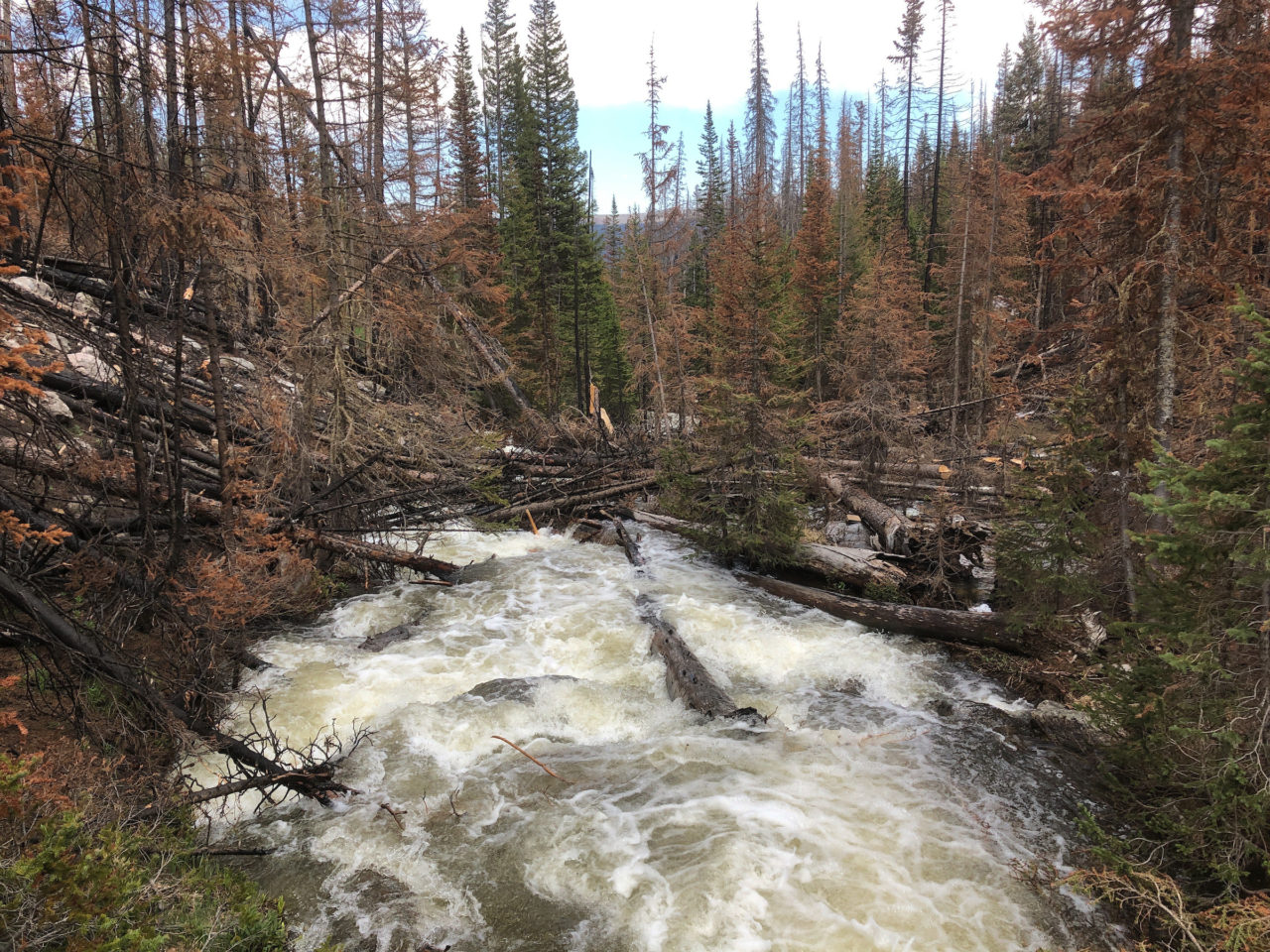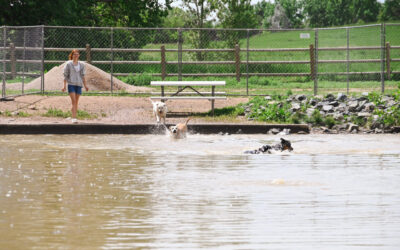Beginning Monday, July 19, helicopters will take flight to begin aerial mulching operations within the Cameron Peak Fire burn area. The goal of these mulching operations is to mitigate the negative consequences of the wildfire to high priority watershed values including water quality and supply, river ecosystem function and health, and to reduce flood impacts to downstream communities in both the Cache la Poudre and Big Thompson watersheds.
At 208,913 acres, the Cameron Peak Fire (CPF) is the largest wildfire in Colorado’s recorded history. The USFS Burned Area Emergency Response (BAER) report estimated 36% of the Cameron Peak Fire perimeter has high or moderate soil burn severity. The report determined that it was ‘nearly certain (90% – 100%)’ that water quality would be impacted by post fire debris flows, run-off, ash flows, sedimentation and nutrient loading within 1-3 years following the fire.
More than 10,000 high priority acres have been identified for aerial mulching in the Poudre watershed and 1,500 acres in the Big Thompson watershed on both public and private lands. High priority project areas were identified using science-based information and modeling, as well as collaborative data input from partners of the Larimer Recovery Collaborative. Aerial mulching is part of a larger program of recovery work intended to provide holistic post-fire mitigation on a total of 20,000 acres in high priority sub-drainages in the CPF burn scar.
The aerial mulching operations are a joint effort between the Coalition for the Poudre River Watershed (CPRW), City of Fort Collins, City of Greeley and the Big Thompson Watershed Coalition (BTWC). Funding for aerial mulching operations is provided by federal, state, municipal and local foundation and donor sources.
“There are several different methods for mitigating impacts from wildfire but aerial mulching is the most effective and large scale,” said Jennifer Petrzelka, City of Greeley Water Resources Operations Manager. “It will take multiple months to complete and is a complex process that requires the coordination of helicopters, workers on the ground, landowners, the forest service and CDOT.”
Mulching operations will be conducted through the summer and fall of 2021 and potentially into the summer of 2022 pending unforeseen weather delays and additional funding. The aerial mulching project will be supported by monitoring efforts led by Colorado State University, the Colorado Forest Restoration Institute and U.S. Forest Service Rocky Mountain Research Station as well as landowner engagement and outreach led by the watershed coalitions.






